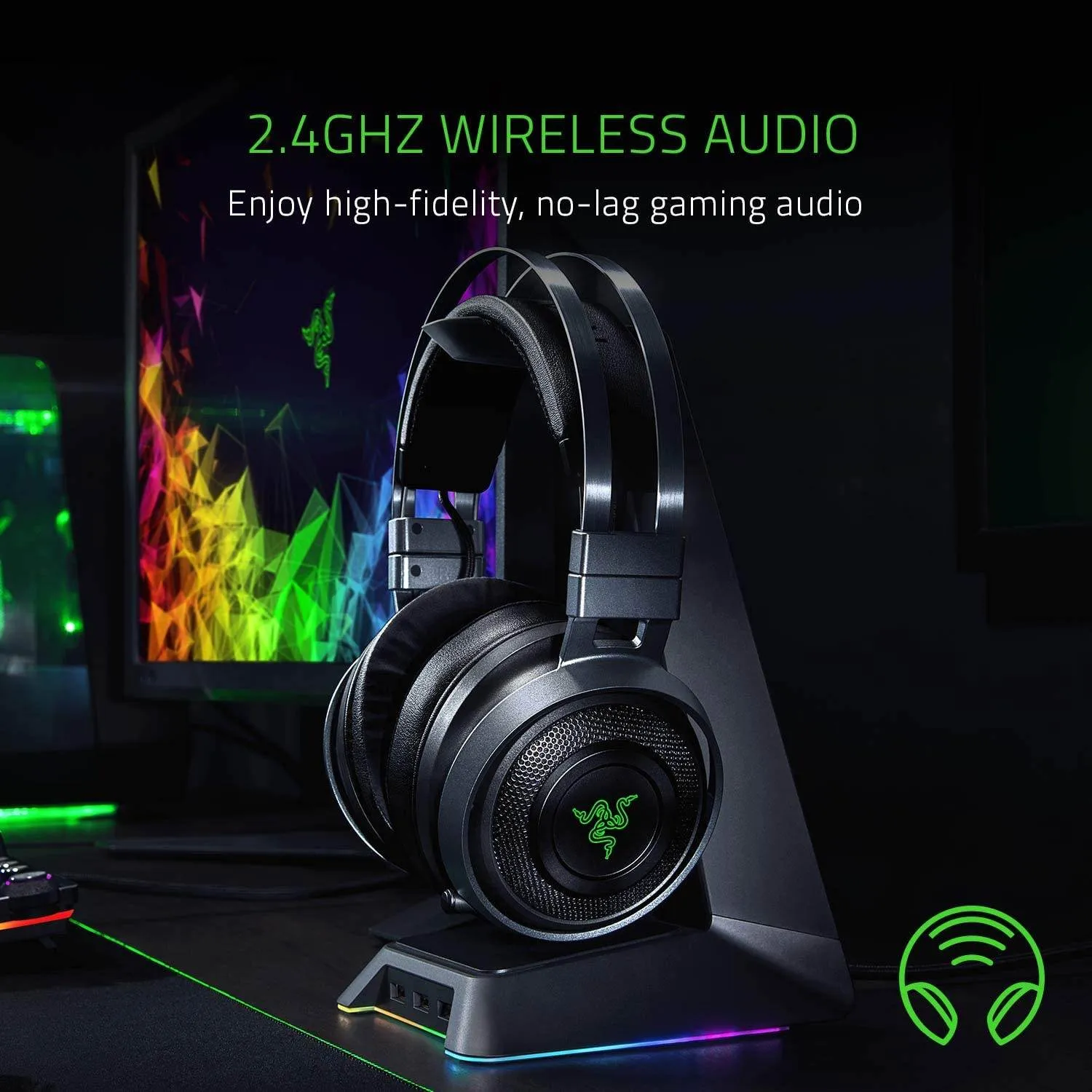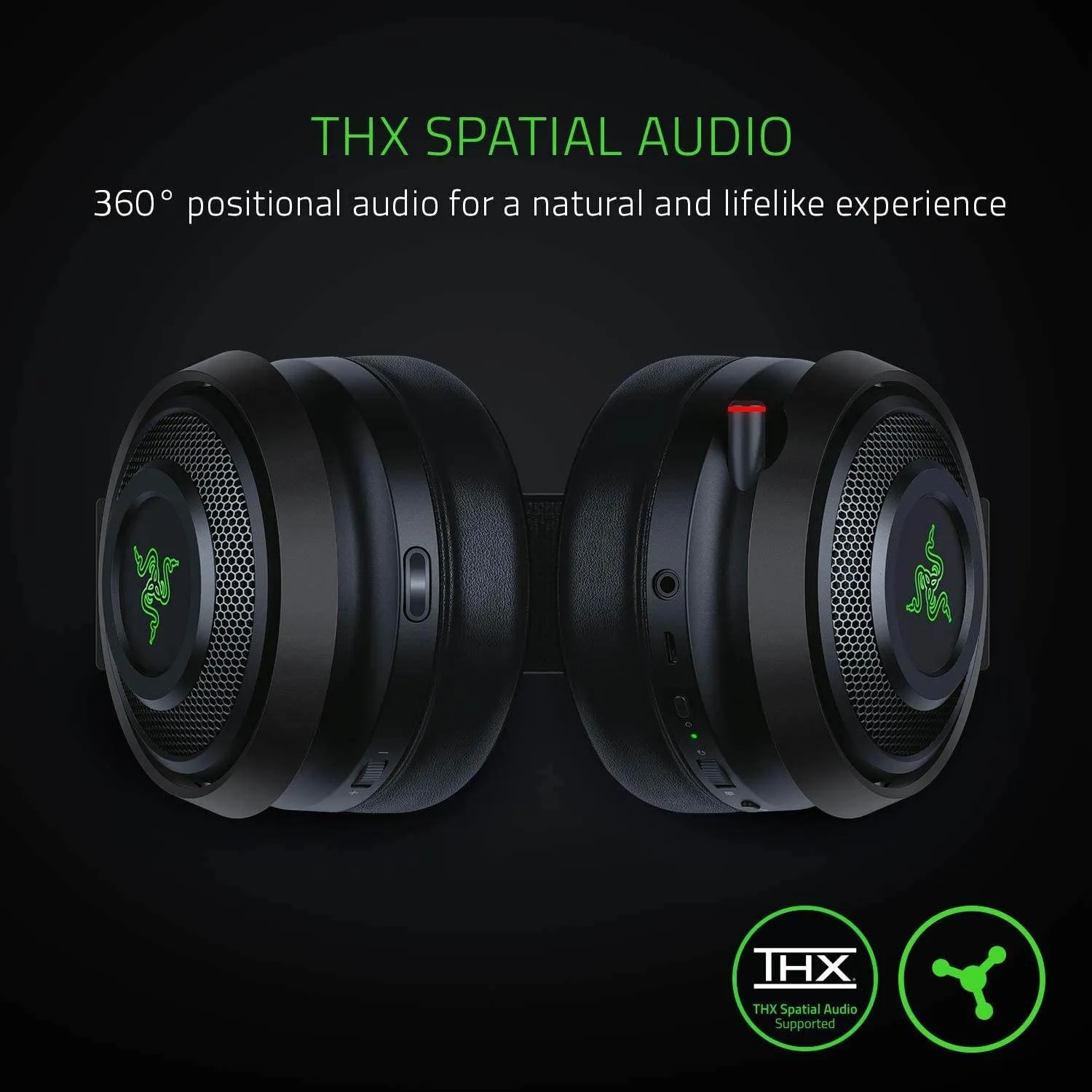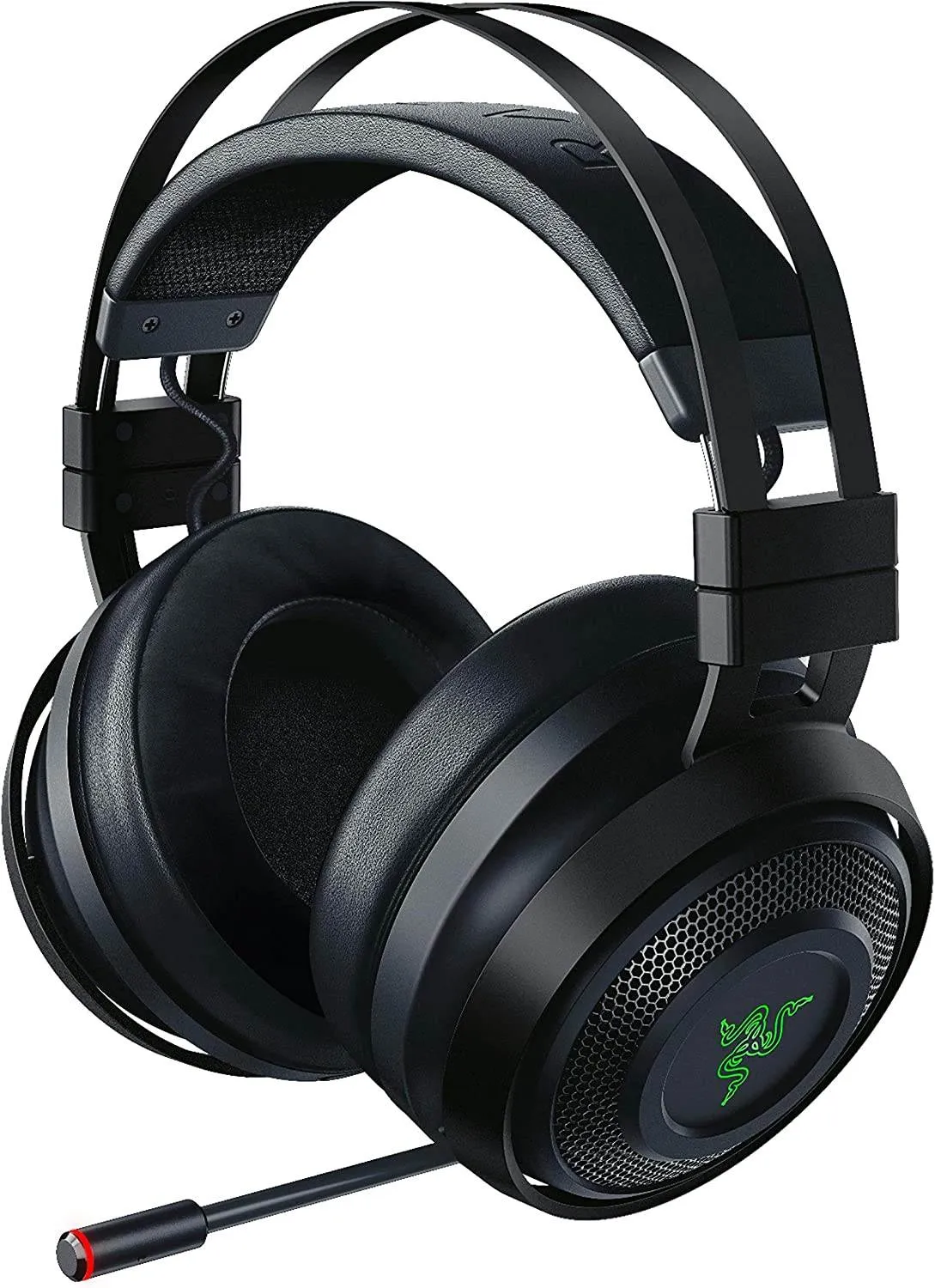The Epic Razer Nari Ultimate Wireless 7.1 Surround Sound Gaming Headset
Prices pulled from the Amazon Product Advertising API on:
Product prices and availability are accurate as of the date/time indicated and are subject to change. Any price and availability information displayed on [relevant Amazon Site(s), as applicable] at the time of purchase will apply to the purchase of this product.
- Frequency Response 20 Hz – 20 kHz.Headphones fit type:On-Ear
- The NPD Group, U.S. Retail Tracking Service, Keyboards, Mice, PC Headset/Pc Microphone, Gaming Designed, based on dollar sales, 2017-2021
- Razer Hypersense Haptic Feedback for Unparalleled Immersion: Provides industry-leading audio realism for intense, in-game immersion and positional accuracy coupled with THX Spatial 7.1 surround sound
- Lightweight & Auto-Adjusting Headband for Extended Gaming Sessions: The Nari Ultimate adapts to the shape of the user’s head for convenient comfort
- Retractable Mic with Audio Adjustment: Tune game/chat balance for the perfect mix of game audio and team communication; also includes a volume adjustment wheel and mic mute button directly on the headset
- Soft Cloth Cushions with Cooling Gel: Reduces heat build-up while providing comfort and sound isolation for hours of comfort
- Cross-platform Compatibility: 2.4GHz wireless audio with a range of up to 12 meters smoothly without disconnection via USB transceiver / wired mode via 3.5 mm audio jack – enjoy high quality stereo sound whether you’re playing on PC, consoles or mobile
- Ultimate Personalization & Gaming Immersion with Razer Chroma: Includes 16.8 million color combinations

All good inventions came from those brave enough to step out of the mold, to break from the norm and develop something that us regular folk thought we didn’t need.
After all, why buy a car, when the horse works just as well? What’s the point of a steam train, when you can just go on a canal boat? Why get a mechanical keyboard, when membrane works just fine? You get the point.
You’ve got to break the mold, then convince other folk that what you’re onto is a damn fine idea. Nowhere is this more needed than in the world of peripherals.
Year upon year we see iteration after iteration after iteration of design. Lighter, thinner, slightly more powerful products. One person does something interesting and add lights, suddenly everyone has better lighting.
One manufacturer breaks the mold and invests in good quality drivers, suddenly everyone’s doing it. After all, it’s far easier to hedge your bets on a feature that’s already established than one that’s out there. From a business standpoint nothing’s more desirable than predictable growth, and that’s why things just don’t progress as fast as they should.
Razer on the other hand, seemed to have either forgotten that, or just said, “to hell with it”, and gone and done something nuts anyway. Ladies and gentlemen, we give you the Razer Nari Ultimate. The first gaming headset out there, with vibrating actuators in each ear-cup. Yep, that’s haptic feedback reverberating around your lobes and into your ears and oh boy is it an interesting addition.
How does this gimmicky entry fare against the best PC gaming headsets out there? Read our review to find out.

Price and availability
We’re going to keep this segment short, because, to be fair, there’s not a lot to talk about. It’s $200/£200/AU$250 for these beauties. On the surface at least, that’s a fairly respectable price for a wireless headset with eight hours of battery life.
Not incredible, but impressive. Couple that with all the other features buried in this baby, and it’s actually fairly affordable.
We should note that our initial test sample had an issue turning off the haptic feedback or change the RGB lighting color. Razer informed us this was an issue only with early pre-production units. We have tested these features on final retail models and the issue has been fixed.
Design
Overall the design of the Razer Nari Ultimate isn’t too dissimilar to the Thresher console series, or the now well-established Krakens from yesteryear. So, expect big padded earcups that rest snugly around your lobes, with hidden cooling pads to keep you cool during the hotter months.
On top of that, there’s an aluminum headband frame, to help provide strength, and an auto-adjusting padded headband, to keep the top of your head comfy.
However, the big party pieces are the included connectivity options. You can connect via wireless 2.4 GHz (with the dongle buried in the headset itself for easy access), analogue with the included four pole cable, and you can also connect via USB in a pseudo-wireless wired mode, which allows you to charge and listen to your cans at the same time, as long as the dongle’s still plugged in.
All-in-all a healthy package. It’s a bit bulky, and perhaps a touch heavier than we’d like, but overall the build quality is good.
Drivers are provided to us with two 50mm neodymium magnets, and on the whole you get yourself a nice 8 hour battery life, or 20 hours if you switch off the lighting and haptic feedback (although that functionality doesn’t yet seem to work, at least not on our rigs).
Performance
As so far as how well they perform? Well it’s a fairly solid affair. You can certainly get headphones with better frequency response, and a stronger soundstage at this price point, but overall you’ll lose out on the other features.
The Razer Nari Ultimate is actually fairly well balanced for a pair of Razer cans, which typically tend to lean more on the side of bass notes than working to secure those mids and trebles.
They’re comfortable too, we had no problem wearing these for a full eight-hour working day, they can be a bit heavy at times, but it’s nothing really to write home about.
One thing we would say is that we wish Razer had spent perhaps a little more time investing in some better dynamic drivers for their more premium options.
The 20Hz – 20kHz range does feel a little bit flat, and when you’ve got the likes of Steelseries, HyperX, and Sennheiser providing some seriously stellar audio solutions at this price point and below, it does deflate just how awesome these things can be. Yes that might add extra cost, but if we’re honest, it’d be worth it.
On top of that, there are niggles we have with the overall design. As they are relatively plug and play, having a hardware switch to disable the HyperSense would make a whole world of sense, especially when you’re plugging in different devices.
It would also be nice to have an option in the Razer Synapse software to control how aggressively the Lofelt L5 drivers responded to the bass (as opposed to just volume adjustment). Fix these three things, and Razer would be on to a winner.



